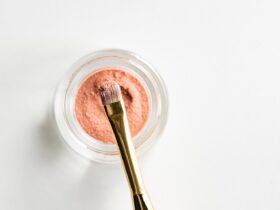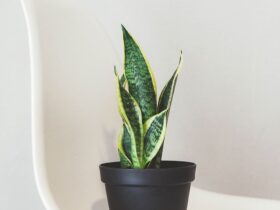The delightful experience of applying perfume relies heavily on a process we often take for granted: atomization. This seemingly simple act of transforming a liquid fragrance into a fine mist is a sophisticated interplay of physics, engineering, and material science. Understanding the science behind perfume atomization reveals why some perfumes project better than others, why some atomizers feel smoother, and even how the composition of the perfume itself plays a role in its final olfactory impression.
The Fundamentals of Atomization
At its core, atomization is the process of breaking a liquid into very small droplets, increasing its surface area dramatically. This increased surface area allows the fragrance molecules within the liquid to evaporate more quickly and efficiently, creating a scent cloud that we perceive as perfume. There are several methods to achieve atomization, but the most common in perfume applications is pressure atomization, which relies on forcing liquid through a small orifice at high velocity.
The key principles involved in pressure atomization are:
- Fluid Dynamics: This branch of physics deals with the movement of liquids and gases. When a liquid is forced through a narrow opening, its velocity increases significantly.
- Surface Tension: This is the property of a liquid that allows it to resist an external force, due to the cohesive nature of its molecules. Overcoming surface tension is crucial for breaking the liquid into droplets.
- Viscosity: This measures a fluid’s resistance to flow. A more viscous liquid requires more energy to atomize than a less viscous one.
- Pressure: The force applied to the liquid to push it through the atomizer nozzle. Higher pressure generally results in finer droplets.
The Anatomy of a Perfume Atomizer
A typical perfume atomizer consists of several key components:
- Dip Tube: A thin tube that extends into the perfume bottle, drawing the liquid fragrance upwards.
- Pump: A mechanism, usually spring-loaded, that creates the pressure needed to force the liquid through the nozzle.
- Nozzle: The critical component where the liquid is forced through a small opening, breaking it into droplets. The design of the nozzle significantly impacts the droplet size and spray pattern.
- Actuator: The button or lever that the user presses to activate the pump.
When the actuator is pressed, the pump draws perfume from the bottle through the dip tube and forces it through the nozzle. The high pressure and small opening cause the liquid to accelerate rapidly. As the liquid exits the nozzle, it interacts with the surrounding air. The combination of the liquid’s high velocity and the air resistance causes the liquid stream to break up into tiny droplets. The size and distribution of these droplets determine the quality and performance of the atomizer.
Factors Influencing Atomization Quality
Several factors influence the quality of atomization, affecting the perfume’s projection, longevity, and overall experience.
- Nozzle Design: The shape and size of the nozzle opening are crucial. Smaller openings generally produce finer droplets, but can also require higher pressure and be more prone to clogging. Some nozzles are designed with swirl chambers or other features to further enhance the atomization process.
- Pressure: The pressure generated by the pump directly affects the droplet size. Higher pressure leads to finer, more uniform droplets, which evaporate more easily and create a wider scent cloud. However, excessively high pressure can lead to a harsh or overly concentrated spray.
- Perfume Formulation: The viscosity and surface tension of the perfume itself play a significant role. Perfumes with higher alcohol content tend to atomize more easily than those with a higher concentration of oils, as alcohol has a lower surface tension and viscosity. The specific combination of fragrance ingredients also influences the overall properties of the perfume and its atomization characteristics.
- Atomizer Material: The materials used to construct the atomizer can affect its performance and longevity. High-quality atomizers are typically made from durable materials like stainless steel or glass, which are resistant to corrosion and can withstand the pressures involved in atomization. The smoothness of the internal surfaces can also influence the flow of liquid and the efficiency of the process.
- Ambient Conditions: Even environmental factors such as temperature and humidity can subtly influence atomization. Higher temperatures can increase the rate of evaporation, while higher humidity can affect the size and stability of the droplets.
Advanced Atomization Techniques
While pressure atomization is the most common method for perfume application, other, more advanced techniques exist:
- Ultrasonic Atomization: This method uses high-frequency sound waves to break the liquid into droplets. It is often used in humidifiers and other applications where a very fine mist is required.
- Electrostatic Atomization: This technique uses an electric field to charge the liquid and then break it into droplets. The charged droplets are then attracted to a grounded surface, resulting in a very even and controlled spray.
- Microfluidic Atomization: This method uses tiny channels and precise flow control to create highly uniform droplets. It is often used in research and development applications where precise control over droplet size is required.
While these advanced techniques are not commonly used in consumer perfume atomizers due to cost and complexity, they represent potential future directions for improving the efficiency and effectiveness of fragrance delivery.
The Sensory Experience of Atomization
The quality of atomization directly impacts the sensory experience of applying perfume. A well-atomized perfume will create a fine, even mist that feels pleasant on the skin and distributes the fragrance evenly. This allows the perfume to develop its full complexity and create a more nuanced and lasting scent. Conversely, a poorly atomized perfume may produce large, uneven droplets that feel wet or sticky on the skin. This can lead to a harsh or uneven scent and may also affect the longevity of the fragrance.
The sound of the atomizer can also contribute to the overall experience. A smooth, quiet atomizer conveys a sense of quality and refinement, while a noisy or sputtering atomizer can detract from the experience.
Schlussfolgerung
Perfume atomization is a complex process that involves a fascinating interplay of physics, engineering, and chemistry. Understanding the science behind atomization allows us to appreciate the technology and craftsmanship that goes into creating a fine fragrance experience. From the design of the nozzle to the composition of the perfume itself, every aspect of the atomization process contributes to the final olfactory impression. By paying attention to the factors that influence atomization quality, we can ensure that we are getting the most out of our perfumes and enjoying the full richness and complexity of their scents.
FAQs
- Build-up of perfume residue in the nozzle.
- Use of a perfume with a high concentration of oils or resins.
- Dust or other particles entering the atomizer.
To prevent clogging, it is recommended to occasionally clean the atomizer by spraying warm water through it. You can also try storing your perfume in a cool, dry place to prevent the perfume from thickening.
















Eine Antwort hinterlassen